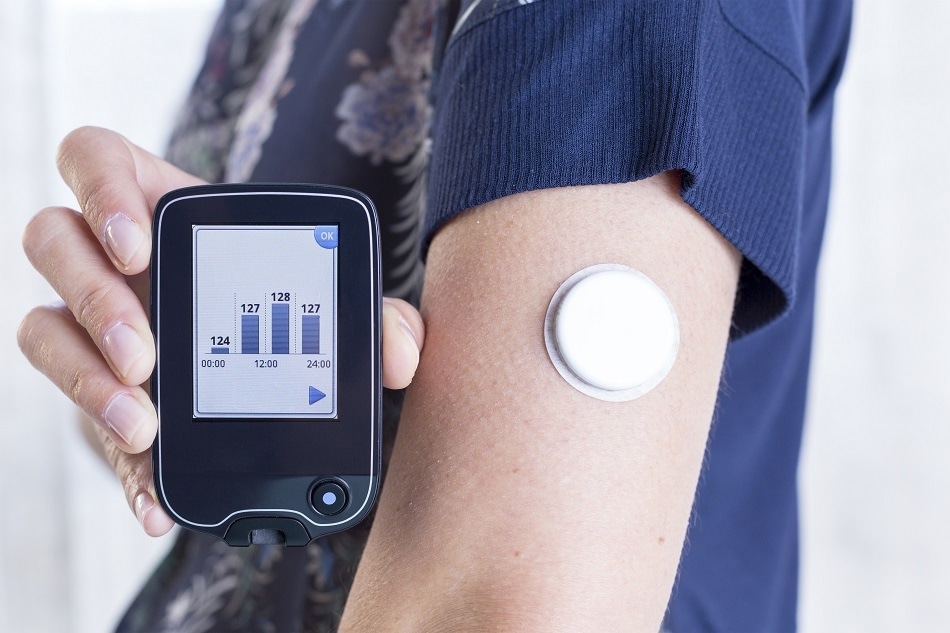Since most sensor materials are incorporated into phones, computers and other electronic devices, they are often composed of precious metals, if directly exposed to humans or the environment can have potentially harmful effects. However, by replacing these metal materials with elements such as magnesium, silicon dioxide and nitride, sensors can be safely present within our body to carry out a number of important functions.

Click and Photo/shutterstock
As sensor technology continues to advance, there has been a growing interest in the development of biodegradable sensors that can be placed within the human body for a wide variety of clinical purposes, as well as on the surface of food products to monitor food quality.
Biodegradable Health Sensors
University of Connecticut’s Biodegradable Sensor
Several clinical researchers have carefully constructed biodegradable health sensors that have shown promise for monitoring patient complications following procedures without requiring the need for bulky devices to be implanted within the individual. For example, a team of researchers at the University of Connecticut utilized a poly-L-lactic acid (PLLA) polymer, which is a commonly used polymer that is often found in FDA-approved medical implants.
PLLA is particularly unique for its piezoelectric properties, which refers to the ability of this material to produce electricity upon compression or a similar form of mechanical pressure onto the material.
In their design, the researchers placed two layers of PLLA between molybdenum (Mo) or magnesium (Mg) materials, both of which are currently used in medical devices and served as electrodes in this specific device, to make up a sensor that exhibited a total thickness of 200 micrometers (µm) for the final sensor1.
To test the efficacy of this biocompatible sensor to monitor the health, an in vivo experiment was then performed in which the sensor was placed on the abdomen of the mouse, which was connected to an amplifier outside of the body of the mouse to detect any electrical currents that derived from the animal’s diaphragm contractions and breathing patterns2.
The researchers also investigated the sensor’s functionality when placed on the dorsal side of the mice, and whether the placement of the sensor in this location could successfully measure any immune responses occurring within the mouse.
Since the mice appeared to only experience mild inflammation at the site of the sensor’s location, the researchers found that this biocompatible sensor continued to provide consistent information on the physiological parameters of the mouse, even after the sensor began to degrade. The success of this study inspired the researchers to continue their work to one day develop sensor devices that can accurately measure pressure that may build up within the eyes, abdomen, arteries or brain when a patient suffers from certain health conditions or following a surgical procedure.
The Biocompatible Brain Sensor by University of Illinois
A 2016 study published in Nature also investigated the potential reliability and biocompatibility of a silicon sensor placed in the brains of rats to monitor intracranial pressure and temperature, both of which are essential biological parameters that need to be measured following traumatic brain injury.
In their design, a 30 µm thick membrane of poly(lactic-co-glycolic acid) (PLGA) was sealed against a 80 µm thick nanoporous silicon layer or 60-80 µm thick magnesium foil. The sensor was then coated in silicon dioxide (SiO2) to provide electrical passivation, as well as a physical barrier against biological fluids surrounding the sensor3.
The team of Illinois researchers conducted both in vivo and in vitro experiments to determine the ability of the sensors to accurately measure pressure, temperature, motion, flow, thermal properties and pH, all of which are important diagnostic parameters that can provide useful information on the progress of injury or success of a pharmacological agent over the course of a given treatment.
The researchers are hopeful that as future advancements in transient electronics continue to arise, that the implantation of biocompatible sensors will become a useful clinical tool to combat a plethora of human diseases.
References
- “Biodegradable, implantable pressure sensors” – National Institutes of Health
- “Biodegradable Sensor Monitors Pressure in the Body then Disappears” – UConn Today
- “Kang, S., Murphy, R. K. J., Hwang, Harburg, D. V., Krueger, N. A., Shin, J., et al. (2016). Bioresorbable silicon electronic sensors for the brain. Nature 530, 71-78. DOI: 10.1038/nature16492.
Disclaimer: The views expressed here are those of the author expressed in their private capacity and do not necessarily represent the views of AZoM.com Limited T/A AZoNetwork the owner and operator of this website. This disclaimer forms part of the Terms and conditions of use of this website.